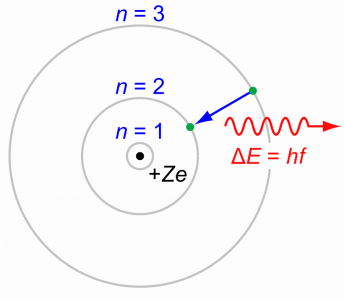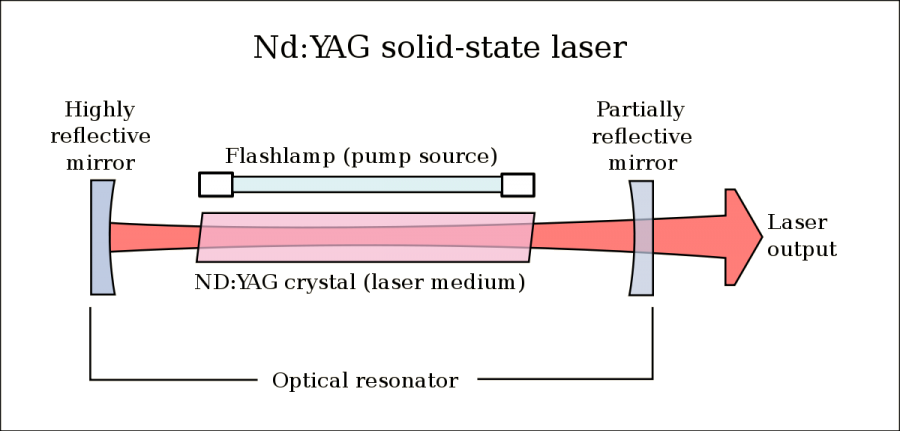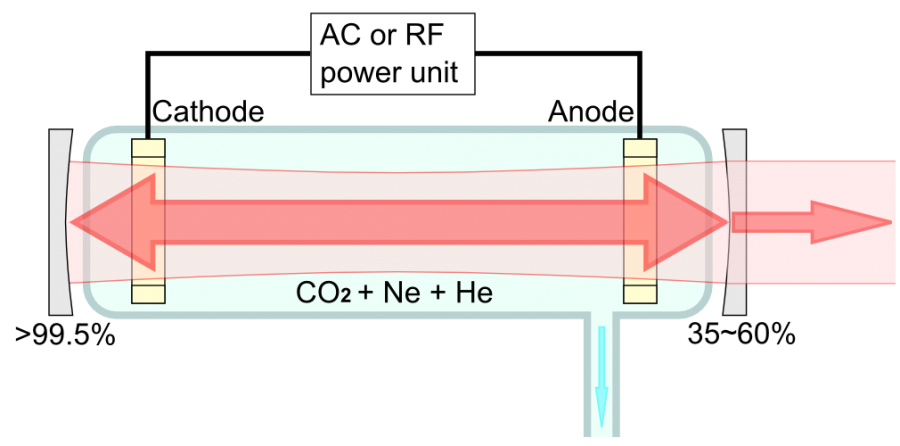Laser technology in 15 seconds
In simple terms, a laser uses light to transmit heat very precisely. The same principle applies to modern lasers as when laser technology was discovered almost sixty years ago. Over thirty years, Permanova has worked to refine the technology and make it easy and safe to use. For those who want to delve into the underlying physics and technology, there is a lot of information to feast on below.

Lasers
Laser light consists of parallel beams of light on the same wavelength. Compared with the light from a torch, this allows the beam to be focused down to an extremely small point.
In order to create a photon, with both wave and particle properties, external energy must be added to an atom. This raises the energy level of one or more electrons, resulting in their jumping up one or more electron shells. This is called excitation.
Since this state is not a natural state for the atom, the electron eventually jumps back to its original level and emits the excess energy in the form of a photon in a random direction. This is called spontaneous emission.
This type of emission is not desirable in the context of lasers as, ideally, photons with a parallel direction are required. This can be achieved by “pushing” the electron down to its original level using another photon. This is called stimulated emission and results in the photons emitted having exactly the same direction as the one that pushed the electron down. These in turn push down additional excited electrons, which creates a chain effect of emissions and subsequently builds up the energy in the laser beam.
The word LASER is the acronym of Light Amplification by Stimulated Emission of Radiation, which is essentially an explanation of the process.
Although all laser generators work in this way, they have different ways of supplying energy, known as pumping, and different types of atoms used for the excitation, i.e. different laser media.

Fibre lasers
These are laser generators that generate a laser beam by exciting an erbium-doped fibre with light.
This type of generator follows the basic principle of how a laser beam is generated, whereby a medium is “pumped” with energy to then emit photons when the medium returns to its natural state.
In a fibre laser, the medium is usually an erbium-doped fibre. The fibre itself consists of three layers – the inner ytterbium-doped core, a transparent middle layer, and the outer sheath.
Pumping is done using relatively cheap diode lasers which insert laser light into the fibre. The light is directed towards and reflected against the outer sheath and repeatedly passes through the fibre core, which raises the electrons of the medium to a higher energy level (excitation), which are then stimulated to return to their basic state (emission), which releases the beams of light (photons).
In this way, the laser beam is generated in the direction of the fibre and is then emitted and transmitted via the fibre to the point of application.
Several types of fibre generators are available. For example, in some cases the beam is bounced between mirrors at the ends, or the pumping is done by way of one or more inlets along the length of the fibre instead of from the end.

Nd:YAG
This is a laser generator that generates a laser beam by exciting an Nd:YAG crystal with light.
This type of generator follows the basic principle of how a laser beam is generated, whereby a medium is “pumped” with energy to then emit photons when the medium returns to its natural state.
In an Nd:YAG resonator, an Nd:YAG-doped crystal is the medium.
Pumping takes place by way of flashing light to raise the electrons of the medium to a higher energy level (excitation), which are then stimulated to return to their basic state (emission), which releases the beams of light (photons).
The photons bounce between a rear mirror and a front mirror to build the laser beam up to its full intensity. The front mirror is semi-transparent and allows a certain number of photons to pass through. However, the majority of the photons are reflected back to maintain the full intensity of the generator.
The photons let through form the laser beam that is then directed via the optical fibre to the point of application.

CO2 lasers
A laser generator that generates a laser beam by exciting a gas mixture with electrical discharges.
This type of generator follows the basic principle of how a laser beam is generated, whereby a medium is “pumped” with energy to then emit photons when the medium returns to its natural state.
In a carbon dioxide generator, a chamber is filled with carbon dioxide, helium, and nitrogen. The carbon dioxide is the medium used to generate the laser beam, and the other gases support and stabilise the process.
Pumping takes place by way of electrical discharges to raise the electrons of the medium to a higher energy level (excitation), which are then stimulated to return to their basic state (emission), which releases the beams of light (photons).
The photons bounce between a rear mirror and a front mirror to build the laser beam up to its full intensity. The front mirror is semi-transparent and allows a certain number of photons to pass through. However, the majority of the photons are reflected back to maintain the full intensity of the generator.
The photons let through form the laser beam that is then directed via optical mirrors and lenses to the point of application.

Misconceptions about lasers
Cost. In the 1990s, laser sources were bulky and relatively expensive to buy. A lot has happened since then. Modern industrial lasers are rarely bigger than a large refrigerator. The cost per kilowatt is a third of what it once was, and uptime is in excess of 99%.
